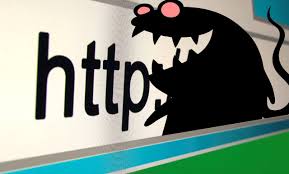Misspelling Risks

When it comes to Internet fraud, misspelling risks can have enormous consequences for users of the Internet. When computer users misspell a URL address while visiting a website, they can unknowingly be taken to a fraudulent website where they share personal information thinking that they are on a legitimate website but ultimately become the target of a phishing scam.
There are thousands of fraudulent websites which are setup to happily greet Internet users who unknowingly misspell website addresses while typing them in their browsers. These fraudulent websites purchase available domains with names which resemble actual and legitimate websites but when users misspell the domain name, that’s when they are greeted with a look alike website which collects information for fraudulent purposes. This crime is called typosquatting or URL hijacking and relies on spelling mistakes that people make.
Website address misspelling risks can arise from even the most minor errors. For example, if you type www.starbuks.com instead of www.starbucks.com, it is a minor spelling mistake which can cost you a lot in some cases. The way that some companies minimize the users’ misspelling risks is by securing the domains which represent common misspelling errors people make. For example, if you type www.Gogle.com or www.Googl.com, you will still be redirected to www.Google.com because Google has taken steps to protect its users. But how many companies are taking the steps to protect their customers? This is why Internet users must take the time to correctly spell a website address to protect themselves. A quick URL typing can cost a lot especially if users don’t take the time to inspect the website after they are redirected to the fake website.
Managing Website Address Misspelling Risks
Although some companies take the necessary steps to protect their customers, not every company can fully protect its customers as there are many variations of a misspelled word. Some of the steps that Internet users can take to protect themselves against Typosquatting or URL hijacking include:
- Be extra careful when visiting important websites such as your financial institution websites because these are some of the highly targeted websites by phishing scammers which can inflict the maximum damage due to the nature of these business. For example, if your bank account access information is stolen, it can inflict much more damage than if your Twitter account information is stolen, although it can still hurt.
- Type slowly and double check the website address you are planning to visit before you press Enter.
- After you enter the site, carefully examine the address bar in the browser. Most likely, if you are visiting your bank website, there will be a lock icon which will also display the name of the registered company which owns the website.
- Regularly monitor your account activities to detect fraud just in case your account information was stolen from you or somewhere else.
As you can see, misspelled words and website addresses can have devastating consequences which can happen if you are in a hurry and type fast without additional verification of the site information or are unaware of the misspelling risks when it comes to the Internet.
Visit Identity Management Institute for training and certification.








